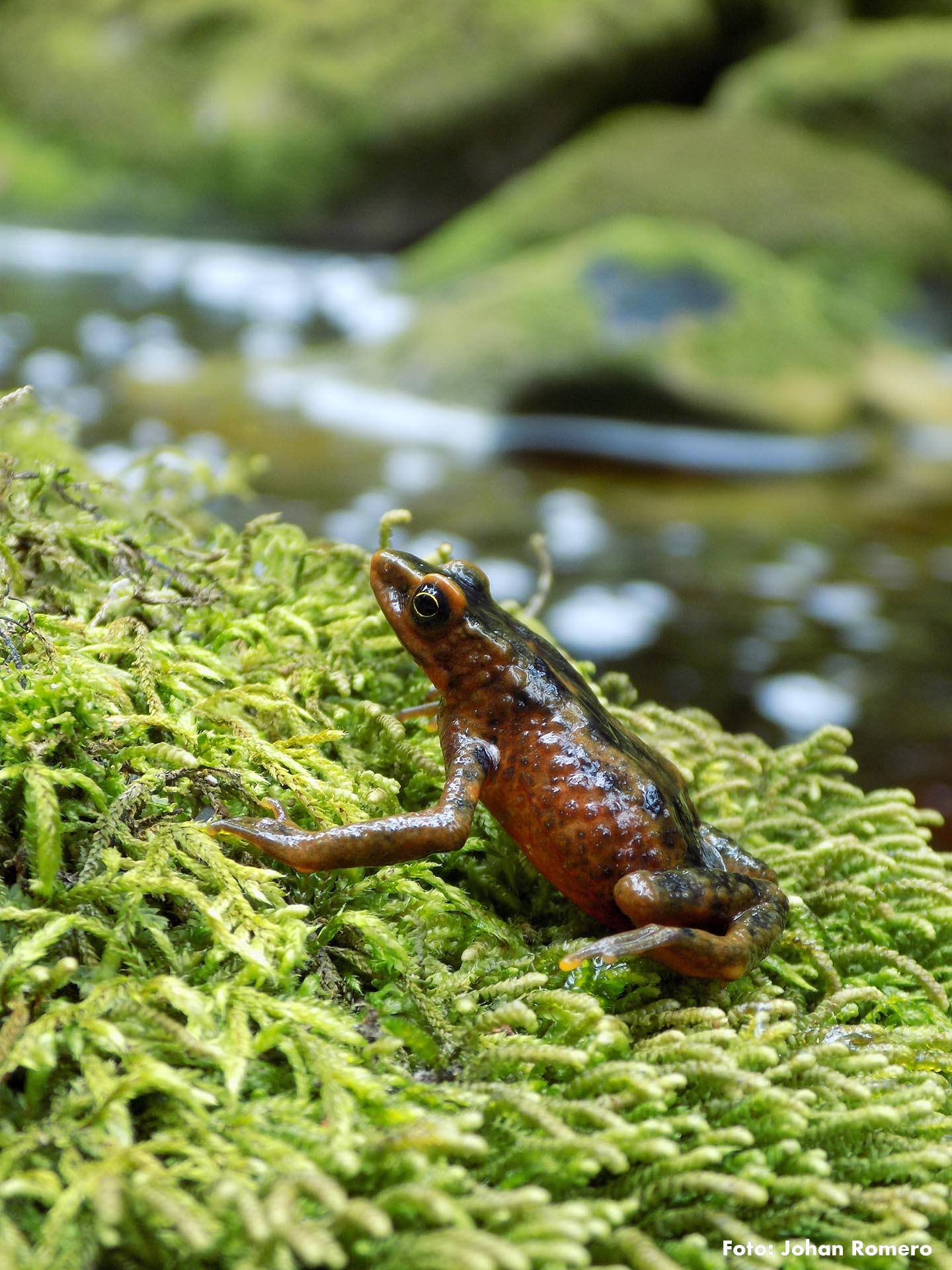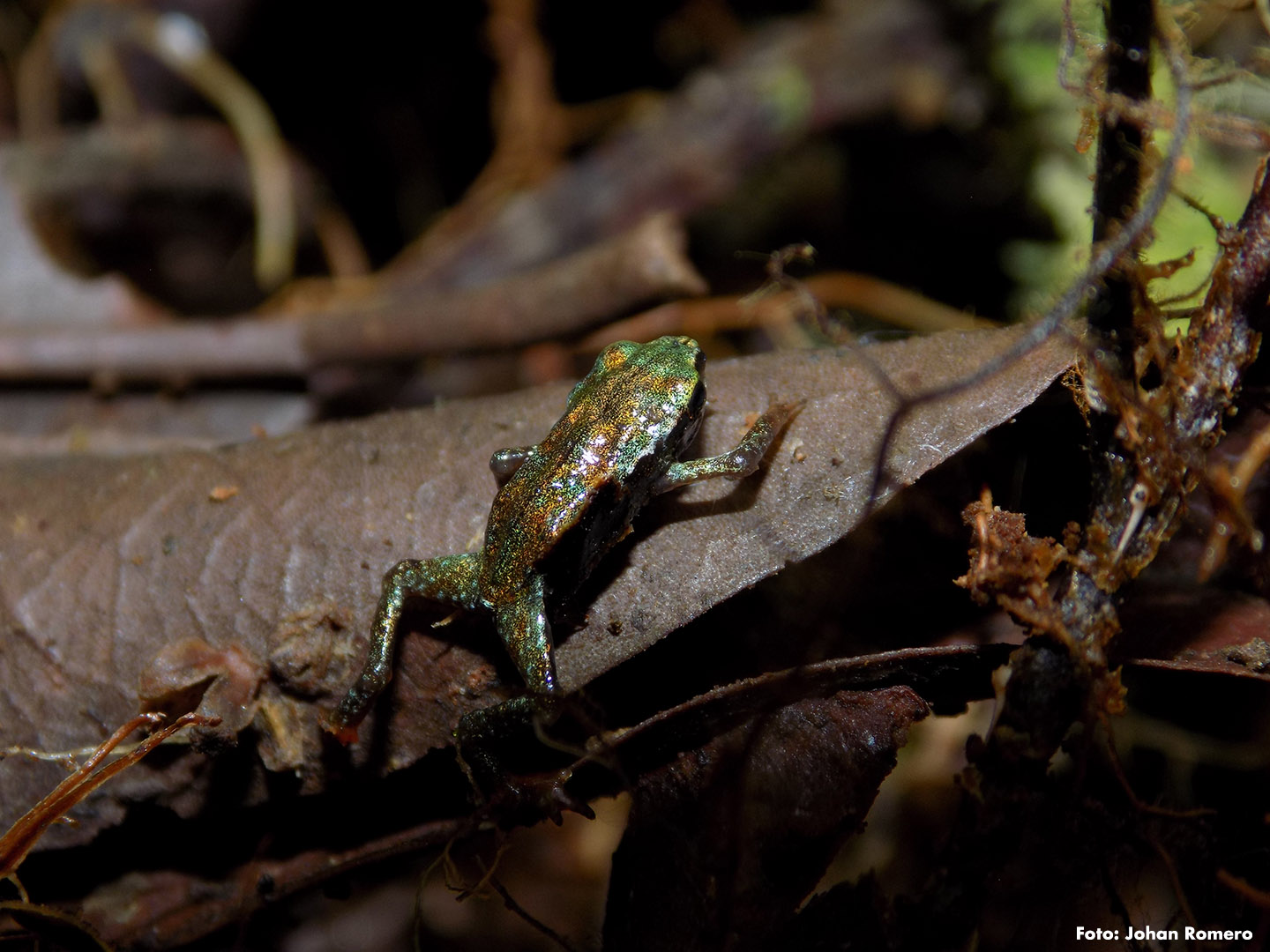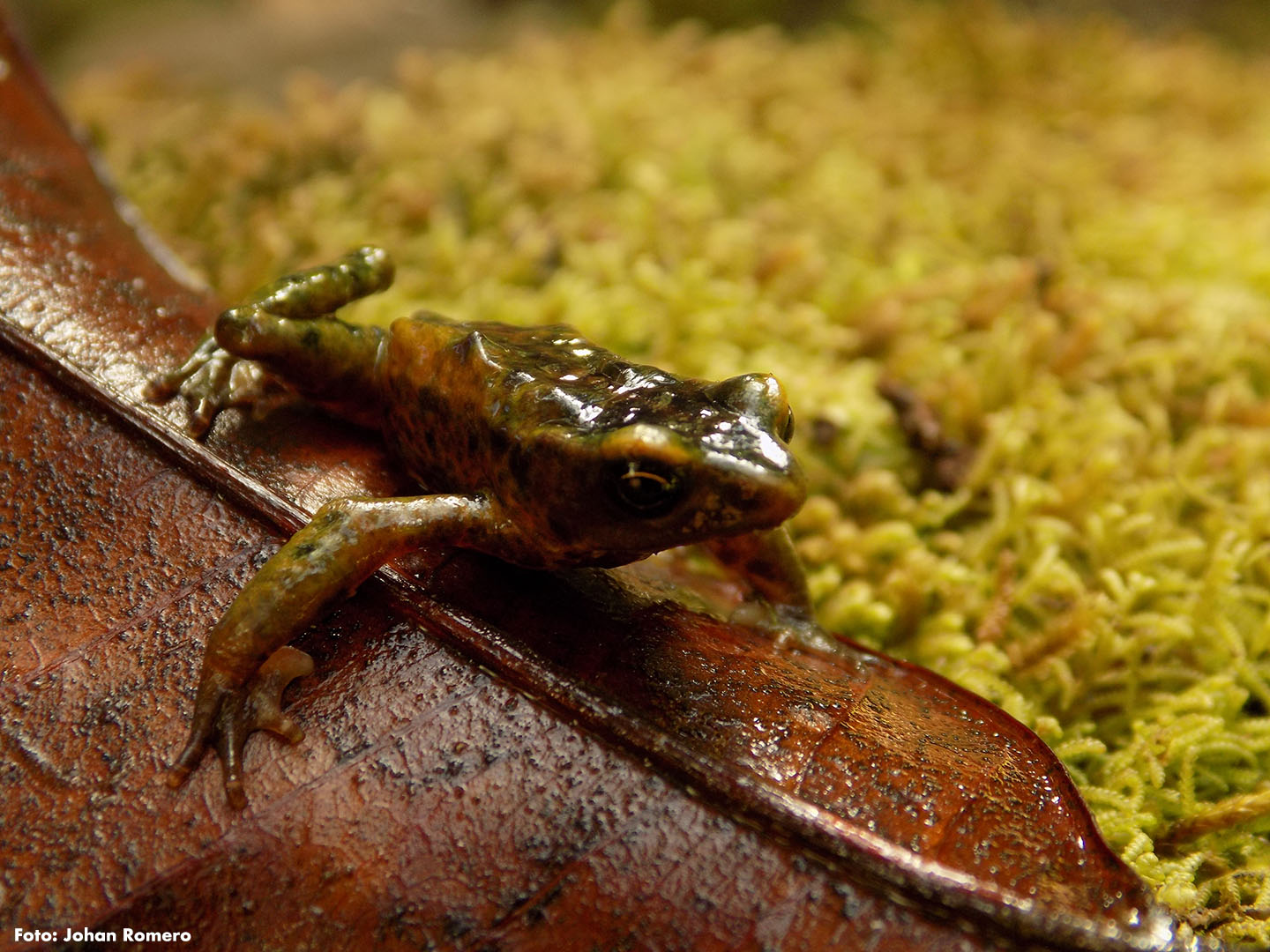Biologists of Universidad del Tolima found the Atelopus subornatus, or ‘Bogota stubfoot toad’, an amphibian that had not been seen in 24 years. The discovery is crucial, because the country has lost populations of at least 38 species of this genus. WCS supports this discovery with technical advice for the investigations on the amphibian, which can lead to the implementation of actions for its conservation.

Andrés Viuche and María Paula Enciso were walking through Bosque de Galilea, in Tolima, with one mission in mind: making an inventory of frogs and toads (anurans) in this biodiverse region, located in the municipalities of Villarrica, Dolores, Prado, Purificación and Cunday, where spectacled bears, jaguars and woolly monkeys as well as many birds, some of them migratory, also live.
With their expedition they not only expected to confirm the presence of certain species, but to collect information for the thesis that would give them a BS degree in biology of the Universidad del Tolima.
They were conducting their field work with a normal routine. But, one day, they found some small amphibians beside a creek that would change their personal plans and their forthcoming destiny: they were tadpoles of a frog known as Atelopus subornatus that no one had seen in 24 years. It was intensely searched for and, as its absence seemed certain, had been declared “possibly extinct”.
They saw 16 larvae or offspring in growth. A few days later, they found an adult and a juvenile. With time, and after taking some samples, they were able to confirm that the tadpoles belonged to the Atelopus frog ‘Bogota stubfoot toad’, as A. subornatus is popularly known. This frog typically has striking brown, green and yellow spots. The back, in the males, is light brown and in the females orange.
Protected zone
“I must admit that it was sheer luck. Nobody suspected that the frog could live in that region of Tolima, which was declared a Regional Natural Park in 2019, and ironically was maintained in peace by the armed conflict. For many years, the presence of armed groups prevented potentially destructive interventions in the zone and even restrained any attempt of academic investigation”, explained Viuche.

“It had always been said that the home of the subornatus was restricted to a very small area in Cundinamarca, known as Alto de Sibaté y Tierra Negra, located between this municipality and Fusagasugá, but this discovery proved that its location can be much broader. Part of the pending work, consequently, will be to determine their real distribution”, explains Gustavo González, WCS associate researcher.
Hope
The discovery not only became an important event for herpetologists. It also opened a small window of hope for the recovery in general of the genus Atelopus, affected by the decline in its populations in the entire continent, including Colombia. (45 species lived in the country and today there are no more than seven with stable populations). This has happened, among other reasons, because of the deforestation of its habitats plus the presence in the territory of diseases such as the fungus Batrachochytrium dendrobatidis, also known as Bd or the chytrid fungus that attacks the skin of these animals and impedes their breathing. The Science magazine published, in 2019, that this disease has led to extinction, not only the Atelopus but also 90 other species of amphibians and has caused the biggest loss in biodiversity related with a disease in the history of the planet.
Many questions
Andrés Viuche finally graduated from Unitolima in 2018 and, from that moment on, became the leader of everything related with the recovery of A. subornatus. He says that, ever since the discovery in 2017, his activities have been focused on the search for support and resources to forge ahead with his endeavor to preserve it.
There is plenty of work pending. The Red Book of Amphibians of Colombia says, for example, that there are no studies on its ecology. Data or consensus on its habits, such as if it is more active during the day or at nighttime, are scarce and there is no information on biological details or if it produces some special sound or songs.
Last year, Viuche found in WCS Colombia a ‘lifesaver’ in his endeavor to find answers and fill in those information gaps. The organization, through its Strategy for the Conservation of Threatened Amphibians, supported by the Zurich Zoo and the Mario Santo Domingo Foundation, is contributing with technical advice and resources. Viuche is presently doing demographic work in situ, with the Group of Herpetology, Ecophysiology and Etiology of the Universidad del Tolima, with which he expects to obtain information on population dynamics that will enable the implementation of conservation strategies.
This would include an inspection to determine if there are specimens affected by the Bd fungus, a hypothesis that must be proven. Apparently, all those that have been seen are healthy.

Part of this support plus the frequent help he has received from the community of the Galilea village in Villarica, allowed Viuche to return, last January, to the site of his discovery, a zone with a difficult access that requires a big physical and logistic effort. Other members of the Herpetology Group, among which Arismedi Prado, Carlos Galindo, Johan Romero and Germán Molina, joined him. Their sacrifice was compensated by the results obtained, described as “very optimistic”, because they did not see 16 tadpoles as Viuche saw on that fortunate day in 2007, but at least 800, some distributed in groups of 100, living in several creeks and attached to the rocks. They also detected 3 adult males, 3 females and a juvenile.
They expect to make a second field trip in May or June and a more thorough and prolonged monitoring because, as it is obvious, in connection with this frog, there are too many questions, but few certainties.
**
The rediscovery of the frog Atelopus subornatus, in 2017, was made within the framework of a joint project of the Institute of Biosciences of the University of Sao Paulo and the Universidad del Tolima. This is why, in the field trip through the Bosque de Galilea, where the discovery was made, researchers Marvin Anganoy, of the Institute of Biosciences, and Raiza Castañeda, of the Universidad del Magdalena, joined Andrés Viuche and María Paula Enciso.